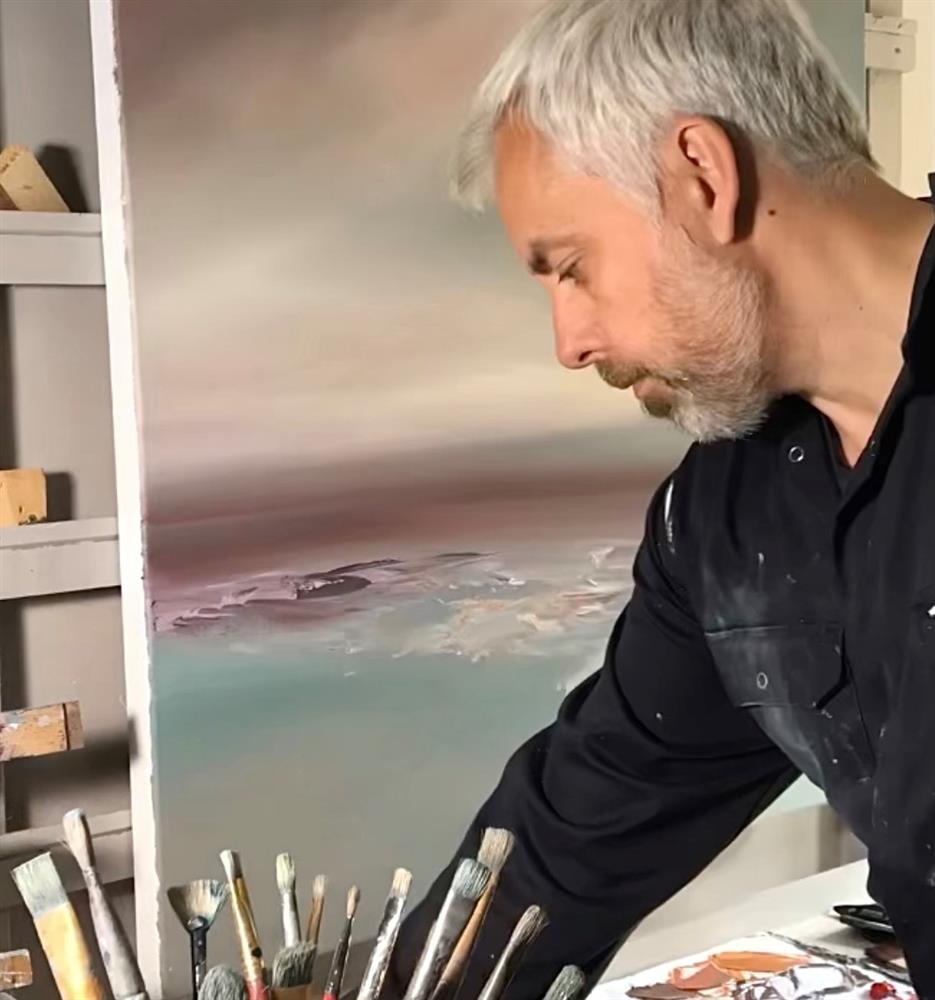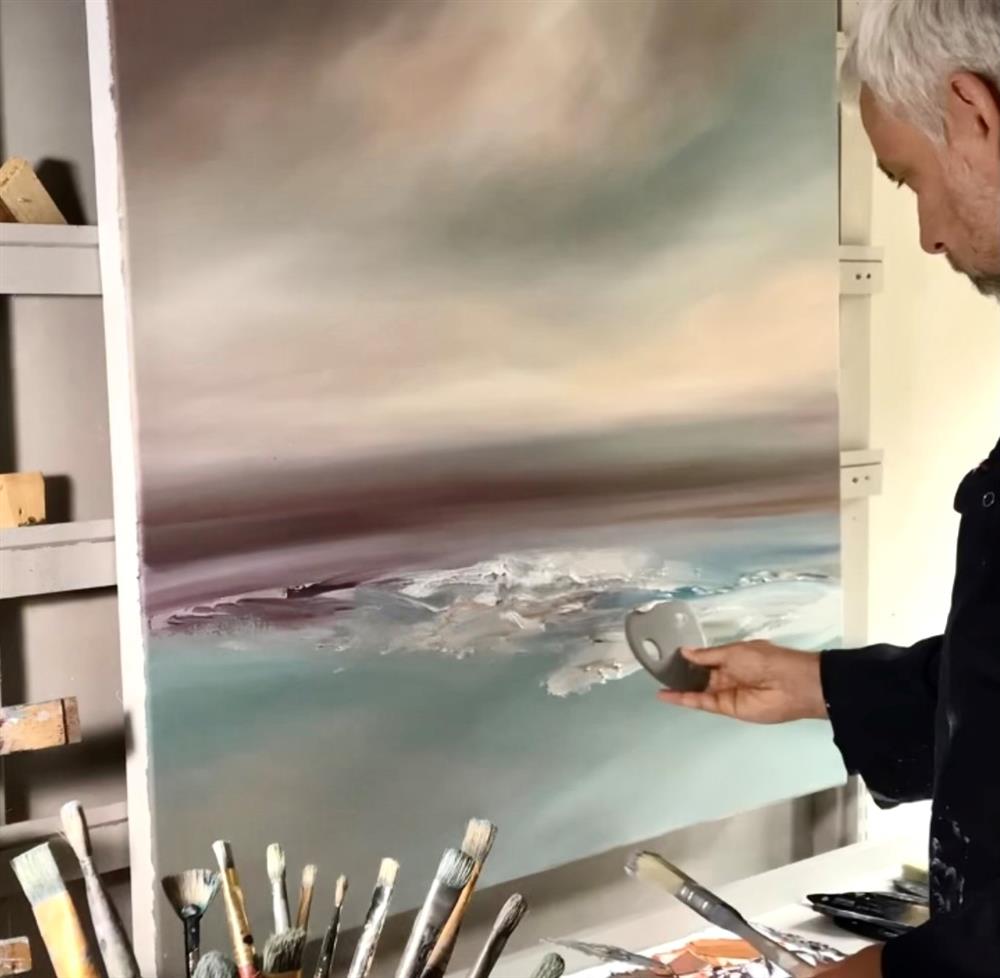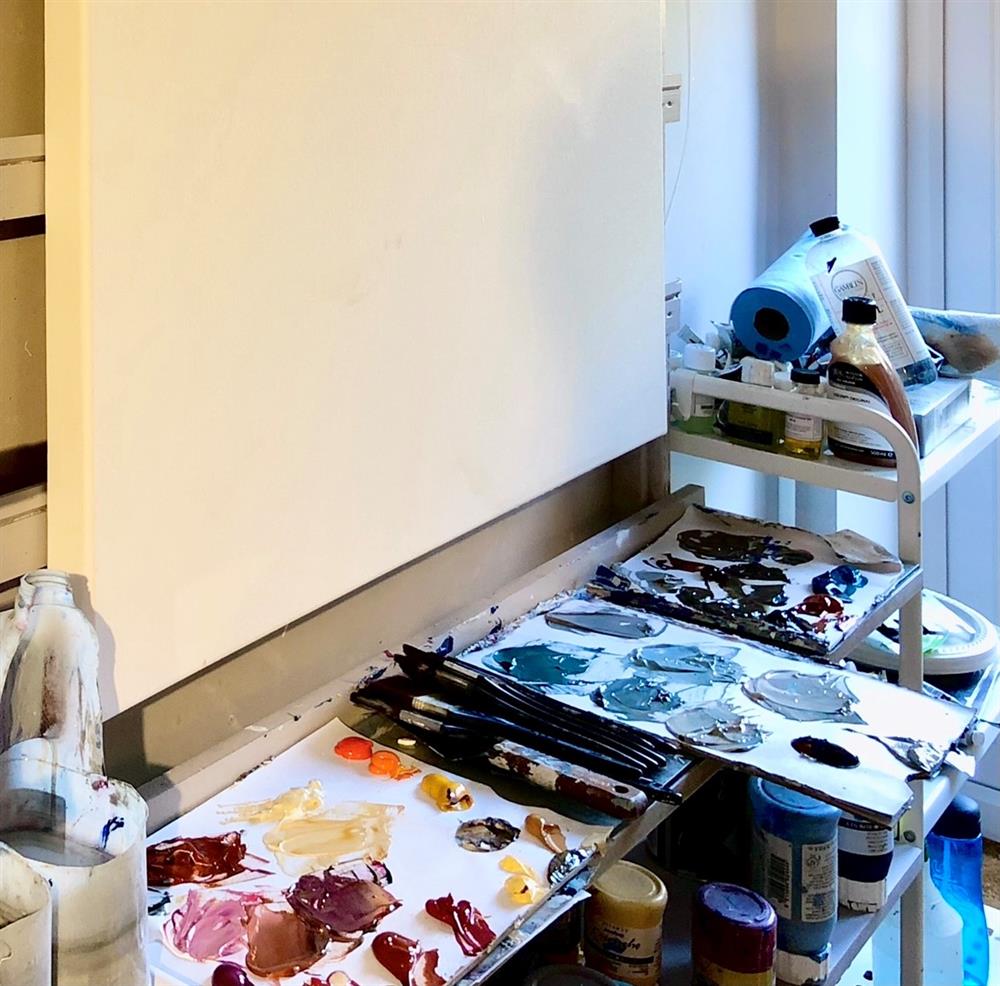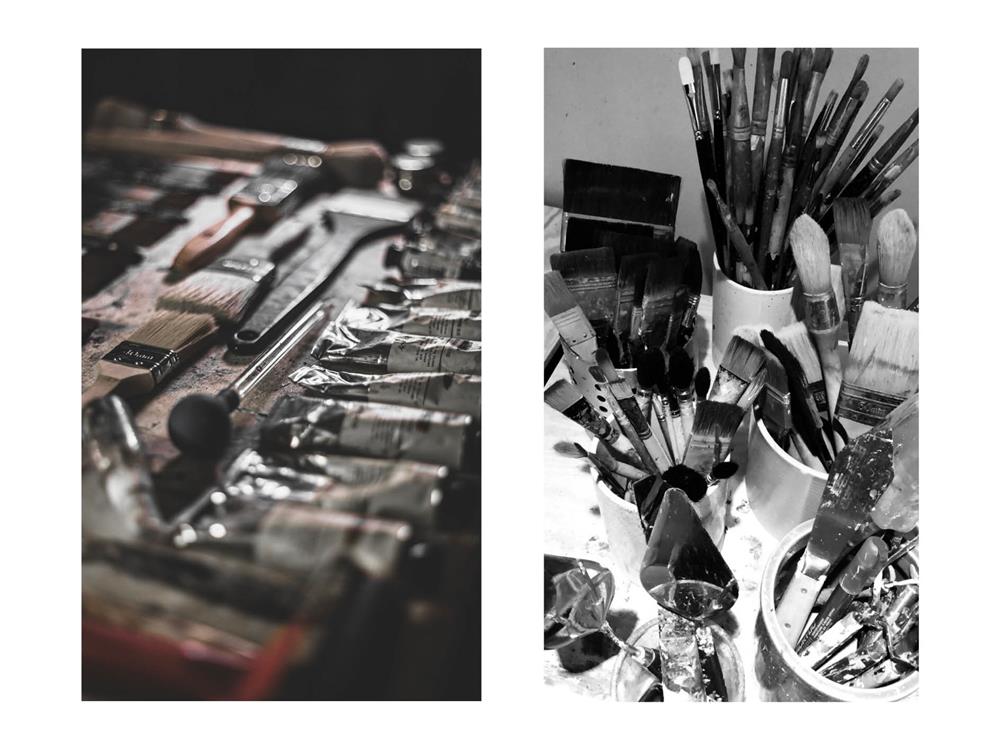It only feels like yesterday that we were welcoming Michael Claxton to our St Albans gallery for his first ever solo exhibition. Fast forward four years from that eventful day in February 2017, and it's heart warming to have witnessed the development and growth of this humble yet focused individual. I took the opportunity to catchup with Michael during lockdown by phone.
How long have you been painting for?
I’ve been painting a long time now. I sold my first work when I was 16. I started off as a lot of artists do in painting portraits; I began with pencil drawings of pets and people. With the style that I’m painting now, I’m probably six years in.
Did you study art at school?
I did, and went on to study art and photography at college. From leaving college and I had a decision whether to go to university or not, and a position came up for a position as an illustrator in Sheffield. Back then it was kind of impossible to find a position like that, so I jumped at it!
They created wearable T-shirts which they sold all around the world, mainly in the USA. The motifs were mainly animals, which I was clearly used to doing. I had to present my portfolio at the interview, and he could see I was adaptable and willing to learn. I then got into using airbrushes which was interesting as I didn’t know anything about it, and it was really a big thing back then. I learnt a lot over those three years – it was like an apprenticeship and was a big learning curve.

How did your career develop from there?
My whole working life has been in creative industries. From illustration I moved into graphic design for companies, helping them with their branding. I was very much working for myself, finding local businesses to work with. Part time I would work for a photography lab within their design department, which is where I built up my photoshop skills. I think this is something a lot of artists do to make a living during the early years, whilst still painting and doing commissions the whole time. I got really good at colour matching (from the photography side of things) and each element was like stepping stones into developing a good ground and base from to build.
We held you first solo exhibition four years ago with your now distinctive style. How did you happen upon this approach?
I never thought that I could paint from my minds eye. Having done a lot of detailed portraiture, you’re working from photos a lot of the time. As a creative person you always want to try something new, and it was only later in life that I managed to carve out some time to experiment. There was a lot of trial and error, especially when you’re not sure what you’re trying to capture. It was constant painting, having happy mistakes and building the knowledge base of how each material reacts and what the drying times are.
The more I’ve gone along, the more I’ve enjoyed building up my textures. It’s almost like mark making, allowing the paint to develop. What I would say is don’t be afraid to fail, as you’re going to fail a lot.

Where do you get your inspiration from?
Subconsciously the way I work, I gather information from the wilderness. I allow things to wash over me, and then images will tend to stick, as will colours palates and values. I tend to go out walking a lot, especially as I’m so close to the Peak District. Although most of my paintings are of the sea, I couldn’t be further from the sea! I do go to the coasts as much as I can though.
I was drawing and painting portraiture for a long time, say 20 years, so you learn to paint really tight with a lot of boundaries. It frees up so much creativity though when you have a blank canvas in front of you, and often you don’t know where you going to go with a painting. It can be a bit scary. I start laying colours and shapes down, and the idea will creep up on you. It’s a much more enjoyable, freer and expressive way of working.
Lockdown has affected the working environment of many – How has it affected you?
I’m lucky that a) I don’t have children, so that hasn’t disrupted my workflow and b) I do have a really good dedicated space at home from which to paint from. I know a lot of artists will have studios around Sheffield and some of those have closed due to lockdown. I created the studio at home a couple of years ago; I have a framing room and another where I paint and can get messy. I used to have a room in the loft, which I swapped with my wife. I now have much more wallspace but the trade off is I don’t have the grey north facing light which I can see through the Velux windows. But I can now paint either indoors or just outside in the garden so I’m happy.
What medium do you prefer to paint in?
I work in both oils and acrylics. Neither is quite the perfect medium for me, so I like using both. The way I build up my paintings is lots of textures and layers, so you build that up with acrylics so much quicker because of the drying time. With the oils you can get richer colours, smoother blending, so it’s a bit of a trade-off. Sometimes I’ll paint backgrounds in acrylics and then finish with oils to make works pop.
It’s irrelevant to me which material is used to create the piece as long as you enjoy the painting. I also prefer working big. Going from working on a 40cm square works in portraiture to 1.5m pieces is great. As long as you don’t have any fear you can attack the canvas.

Are the pieces representative of any particular location?
When I start a painting, I don’t have a particular place in mind. My paintings are deliberately vague so you can create the association. People do often want to recognise a place in it, and I understand that. A piece of art is subjective and it’s more an emotion or a feeling of where someone might have been. People see what they want to see in the painting and I love that people can connect with the piece in their own way, and that’s what I’m trying to achieve.
I do really enjoying working with clients. Seeing their space and creating a piece for their home is great. That’s where I get the biggest buzz – seeing the finished piece hanging in situ gives a huge amount of satisfaction.
What’s your favourite tool or implement?
Oh, that’s a good one. It’s changing all the time as I’m constantly experimenting. I started using rubber kitchen spatulas, playing with them and cutting them. I wanted to create new and interesting marks, something maybe a paint brush or palate knife can’t do. I’m always looking for new tools that create different marks. Brushes are funny ones - I have really expensive ones which I treat with respect and others which I abuse. Sometimes though I’ll have a well worked oil brush that’s a bit stiff, and it creates marks that some brushes you’ve been nurturing simply can’t! I seldom throw brushes away and I’ve got a lot of them, but I probably don’t even use 75% of them.


